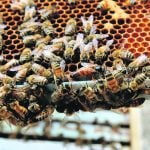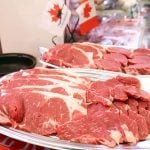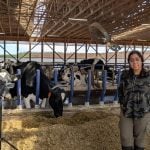A batch of poultry feed products made by an unnamed Alberta rendering plant is being pulled from sale for disposal on concerns that it may contain prohibited cattle parts.
The Canadian Food Inspection Agency said in a statement Saturday that it has launched an investigation into what it calls “potentially contaminated feed products.”
“Information to date indicates that a limited amount of poultry feed may have been inadvertently contaminated with specified risk material (SRM)” earlier in March, the agency said.
CFIA didn’t say in its statement how the poultry feed may have been “inadvertently” contaminated, nor where it may have been shipped.
Read Also

Mexico agriculture secretary says still no date for restarting cattle exports to U.S.
Mexican Agriculture Minister Julio Berdegue said on Wednesday that Mexico and the United States have not yet set a date to resume Mexican cattle exports amid an outbreak of the flesh-eating screwworm parasite.
SRMs are the tissues known to harbour the prions that cause bovine spongiform encephalopathy (BSE) in infected cattle. They’re removed from all cattle slaughtered for food, have been banned from ruminant livestock feed since 1997 and have been banned from fertilizer, all pet food and all livestock feed since 2007.
In this case, the feed that may be contaminated with SRM “poses no health risk to poultry and does not affect the safety of poultry meat and eggs,” CFIA said.
Nevertheless, the “vast majority” of the poultry feed in question has been “identified, contained and will be disposed of,” CFIA said, and the rendering company “is working closely with the CFIA to quickly identify and dispose of all potentially contaminated feed.”











